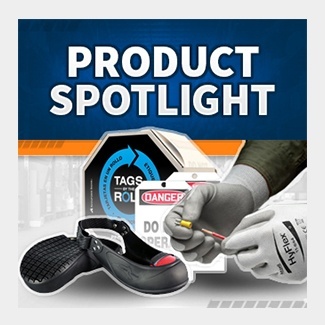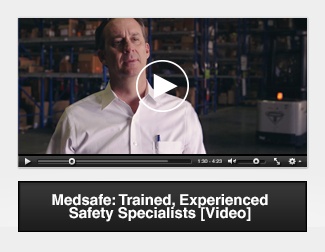Your firm just took on a new building project – it’s a big one and everyone is buzzing about it. But it will require your workers to be at heights for a large part of their workday. Your past projects haven’t involved this. This means you've got a bit of a learning curve to deal with.
You're unfamiliar with the many details involved in working at height. But you know that one of the most important considerations is worker safety. Still, you're not exactly sure where to start.
Do you need to invest in fall protection? Absolutely. But who will need it? And what kind of protection will they need?
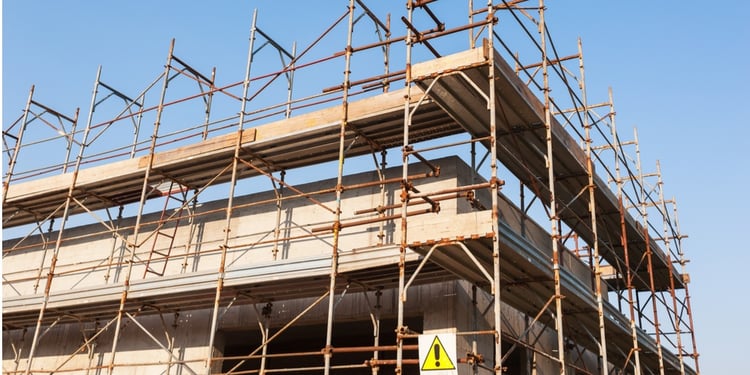
Construction Safety Risks at Height
Falls are among the most common causes of serious work-related injuries and deaths. According to the Bureau of Labor Statistics, nearly 800 workers died from falls on the same level or to lower levels in 2014. Further, more than 261,000 workers missed one or more work days from such falls. This statistic refers to workers in private industry, state, and local government sectors.
The construction industry accounts for the highest frequency of fall-related deaths. This is due to the often dangerous nature of the work. But there's good news! Workplace falls are entirely preventable with the proper use of fall protection devices.
Getting to Know the OSHA Standards
Your first step should be to familiarize yourself with OSHA fall prevention regulations. OSHA standard 1926.501 outlines when and how to use fall arrest systems. The standard encompasses various industries and situations.
Federal regulations mandate the use of fall protection at the following elevations:
- General Industry: 4 feet
- Shipyards: 5 feet
- Construction: 6 feet
- Long-Shoring Operations: 8 feet
- Steel Erection: 10 feet
- Decking Operations: 30 feet
OSHA also requires anyone working over dangerous equipment and machinery to use fall protection. This regulation stands regardless of the elevation distance. It includes anyone working above conveyors, vats, tanks, crushers, and foundry equipment.
Assessing the Fall Protection Needs of Your Workplace
Every job site is different, which means that your fall protection needs will vary. What works for one project may be completely ineffective for another. This is why it’s critical to conduct a full assessment to identify hazards and figure out how to address them.
Questions to consider during your assessment include:
- What type of work is being done?
- Are leading edges involved?
- How much fall clearance is there? Will it remain the same or change throughout the workday?
- Are fall protection devices such as guardrails practical? Are they sufficient, or are fall arrest systems needed as well?
Fall Protection Options
There are a wide range of options to prevent and arrest falls. Let’s take a look at the three conventional forms of fall protection.
Guardrail Systems
Installing guardrails around the edges of platforms helps to prevent workers from falling. In some applications, guardrail systems are practical and can be safely installed. In these cases, OSHA requires the top edge height of top rails to be 42 inches (+/- 3 inches) above the walking-working surface.
There may not be a wall that measures at least 21 inches high. When this occurs, install midrails, screens, mesh, or solid panels. Their location should be midway between the walking-working surface and the top edge of the guardrail.
Guardrail systems may be appropriate when working around holes. They're also suitable for use on ramps and runways, and around hoist areas.
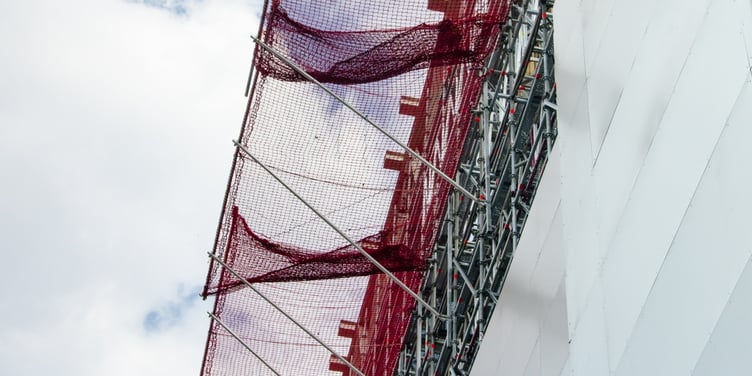
Safety Net Systems
Safety nets don’t prevent falls, but they can catch workers before they fall too far.
Like guardrails, safety nets provide collective protection. They protect everyone working at height in a given area. They also provide “passive protection,” which means that workers do not have to do anything to be safe. In other words, there is no personal equipment to inspect. Further, individual workers aren't responsible for using them properly.
There are many OSHA-mandated regulations to meet if this is the route you take. But you must first ensure that a safety net makes the most sense for your operation. Some of the major points from OSHA include:
- Install safety nets as close as possible under the work surface, and never more than 30 feet below.
- Ensure the potential fall area is unobstructed.
- Extend safety nets outward from the outermost projection of the work surface. The compliant distances are as follows:
|
Vertical distance from working level to horizontal plane of net |
Minimum required horizontal distance of outer edge of net from edge of working surface |
|
Up to 5 feet |
8 feet |
|
5 to 10 feet |
10 feet |
|
More than 10 feet |
13 feet |
- Ensure enough clearance to prevent contact with surface or structures below the net. You can test this by dropping a 400 pound sandbag from the highest surface with exposure to fall hazards.
- Do not exceed the maximum mesh size of 6 inches by 6 inches. Secure all mesh crossings to prevent enlargement of the opening.
Applications where safety nets may be appropriate include:
- Workspaces more than 25 feet above the ground, water, or other surface.
- Where ladders, scaffolds, safety lines, and fall harnesses are impractical.
- As overhead protection on a jobsite where workers or public traffic are underneath the work area.
Personal Fall Arrest Systems
Personal fall arrest systems attach to the worker. They consist of several components:
It’s essential to have every piece of equipment inspected before each use to ensure it’s free of damage. There are no exceptions to this.
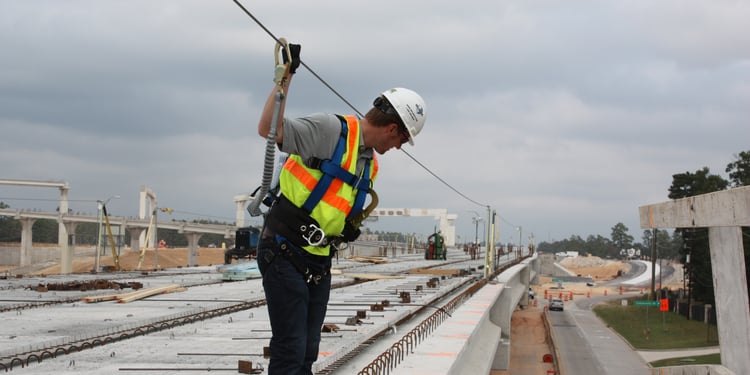
Full-body harness
Full-body harnesses minimize stress on a worker’s body in the event of a fall. It’s important that harnesses fit properly to ensure safety and effectiveness. The harness should fit snugly, but it should still provide the freedom to move around and perform work duties. Need help picking the right harness for the job? Check out our blog "The Ultimate Guide to Choosing the Right Fall Harness"
Lanyard or SRL
- Energy Absorbing Lanyards are one of the simplest fall arrest devices. They're composed of webbing or cable with an attached energy absorbing element. Further, they are no more than 6 feet in length and have energy-absorbing capabilities. During a fall, the energy absorber extends until the fall is completely artrested. One advantage of lanyards is that they're inexpensive; however, they often require a significant amount of clearance for safe usage.
- Self-Retracting Lanyards (SRLs) connect to a single anchor point. They function in a manner similar to that of a car's seatbelt. When the cable paying out of the device reaches a certain rate of speed or level of force, a locking mechanism engages. This arrests the downward motion of a fall. Refrain from using SRLs when other workers are close by, as this poses a potential risk of lifeline cables becoming tangled.
Cant decide between the two? Find out the pros and cons in our informative blog "How to Choose the Right Deceleration Device: Energy Absorbing Lanyards Vs. SRLs"
Lifeline
There are two types of lifelines, each of which is appropriate in a different situation:
- Vertical lifelines consist of a vertically suspended flexible line. A fall arrester travels up and down this line. They are suitable for those working on the vertical plane, such as on a ladder.
- Horizontal lifelines consist of a flexible line connected to an anchor at each end. They are suitable for workers operating on the horizontal plane.
Anchorage Device
Selecting the right anchorage device is crucial. If a worker falls, that anchor will bear the force generated by the fall, and the resulting weight of the suspended worker. Their life will depend on its strength. The anchor must be easily accessible, and located a safe distance above obstacles. It must also be capable of supporting 5,000 pounds per worker.
It’s Not All About Equipment
Falls are complex events. While equipment is important, we can’t neglect the human aspect. Training is a critical part of preventing falls and creating a safer workplace.
That's why workers should receive ongoing fall protection training to stay up-to-date. It should encompass safety regulations and best practices in their industry. Provide training and review sessions on how to inspect equipment, as well. All workers using fall protection systems require this training.
When it comes to safety, fall protection is no joke. Everyone must do their part to protect workers.


